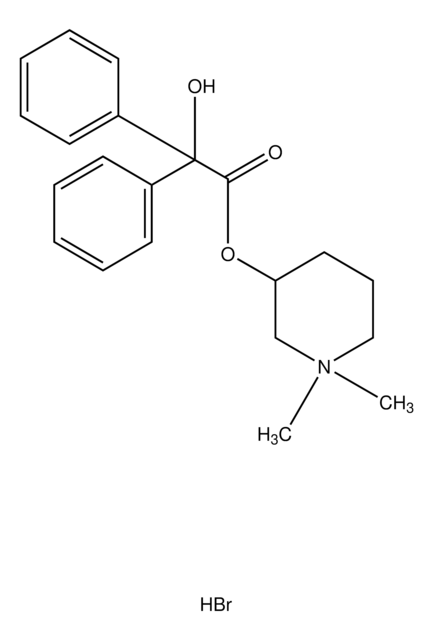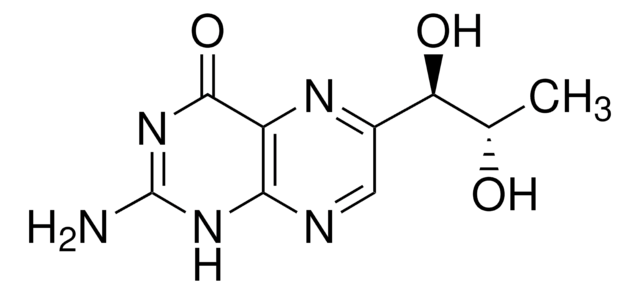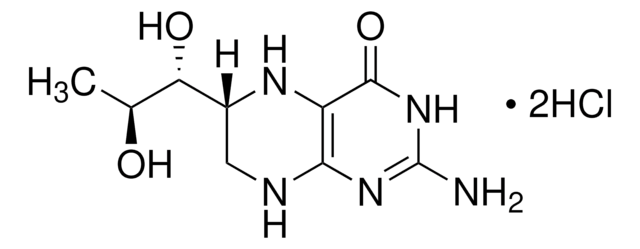M5793
3-Morpholinosydnonimine hydrochloride
(consistent with structure, NMR)
Synonyme(s) :
3-(4-Morpholinyl)sydnone imine hydrochloride, Linsidomine hydrochloride, SIN-1 hydrochloride
About This Item
Produits recommandés
Niveau de qualité
Température de stockage
−20°C
Chaîne SMILES
Cl[H].[NH-]c1c[n+](no1)N2CCOCC2
InChI
1S/C6H10N4O2.ClH/c7-6-5-10(8-12-6)9-1-3-11-4-2-9;/h5,7H,1-4H2;1H
Clé InChI
NCGICGYLBXGBGN-UHFFFAOYSA-N
Vous recherchez des produits similaires ? Visite Guide de comparaison des produits
Application
- as a peroxynitrite donor standard to study the accumulation of peroxynitrite in Arabidopsis thaliana
- to study its effects on nitrosative stress in human brain vascular pericytes and human embryonic kidney cells
- as a ROS to study its effects on mouse embryonic fibroblasts
Actions biochimiques/physiologiques
Code de la classe de stockage
11 - Combustible Solids
Classe de danger pour l'eau (WGK)
WGK 2
Point d'éclair (°F)
Not applicable
Point d'éclair (°C)
Not applicable
Équipement de protection individuelle
Eyeshields, Gloves, type N95 (US)
Certificats d'analyse (COA)
Recherchez un Certificats d'analyse (COA) en saisissant le numéro de lot du produit. Les numéros de lot figurent sur l'étiquette du produit après les mots "Lot" ou "Batch".
Déjà en possession de ce produit ?
Retrouvez la documentation relative aux produits que vous avez récemment achetés dans la Bibliothèque de documents.
Les clients ont également consulté
Articles
DISCOVER Bioactive Small Molecules for Nitric Oxide & Cell Stress Research
Nitric oxide (NO) as a signal transporter in neurons, endothelial cells and in the immune system.
Notre équipe de scientifiques dispose d'une expérience dans tous les secteurs de la recherche, notamment en sciences de la vie, science des matériaux, synthèse chimique, chromatographie, analyse et dans de nombreux autres domaines..
Contacter notre Service technique














